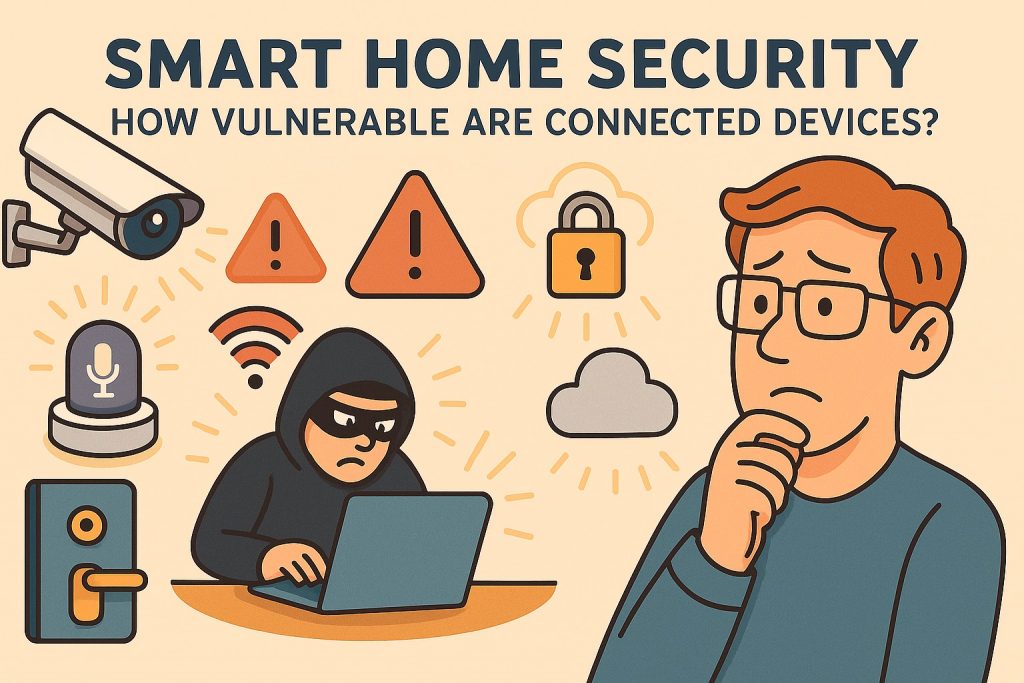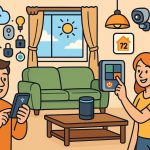As smart homes become more common, offering convenience, automation, and energy efficiency, a new concern emerges: security. From voice assistants to smart locks, connected thermostats to baby monitors — all these devices communicate over networks and may store sensitive data. But how secure are they really? And what risks do users face?
The Rise of Smart Homes
Smart homes are built around the Internet of Things (IoT) — a network of devices that gather and exchange data. These devices can be controlled remotely via smartphones or voice assistants and can interact with each other to automate daily tasks. While this convenience improves daily life, it also introduces new attack surfaces for cybercriminals.
Main Security Vulnerabilities
- Weak Passwords and Default Settings
Many smart home devices ship with default usernames and passwords that users never change. This makes them easy targets for brute-force attacks or unauthorized access. - Unencrypted Communication
If a device communicates with the server or with other devices without using encryption, data can be intercepted by hackers — including video feeds, access logs, or personal commands. - Outdated Firmware
Manufacturers often release firmware updates to patch security flaws. However, not all devices update automatically, and users may not be notified, leaving them exposed to known vulnerabilities. - Centralized Hubs as Single Points of Failure
Smart homes often depend on a central hub (like a router, voice assistant, or control app). If compromised, this hub can give attackers access to all connected devices. - Third-Party Integrations
Integrating third-party apps or services can increase functionality but also exposes the system to external risks if those apps have weaker security.
Real-World Threats
- Hacking Smart Cameras: Unauthorized access to security cameras has led to privacy breaches, including live feeds being streamed online.
- Smart Locks Bypass: Vulnerabilities in digital locks can allow burglars to enter without physical force.
- Voice Assistant Hijacking: Devices like smart speakers can be triggered by imitated voices or recorded commands, enabling unintended actions.
Best Practices for Smart Home Security
- Change Default Passwords Immediately
Use strong, unique passwords for each device and enable two-factor authentication where possible. - Regularly Update Firmware
Check for updates manually if automatic updates are unavailable. Keep all devices — especially the router — up to date. - Secure Your Wi-Fi Network
Use WPA3 encryption, disable remote access when not needed, and create a separate network for smart home devices. - Limit Data Sharing and Permissions
Review privacy settings and disable unused features like geolocation or voice recording. - Monitor Network Traffic
Use network monitoring tools to track unusual activity or unauthorized device connections.
Future Challenges
As more homes adopt AI-driven automation, the complexity of smart systems will increase, making security harder to maintain. The introduction of edge computing and inter-device AI coordination adds layers of logic that can be exploited if not designed securely. Additionally, regulatory gaps mean that many manufacturers are not yet held to high cybersecurity standards.
Conclusion
Smart homes are a powerful step toward modern living, but without robust security measures, they can become a gateway for intrusion rather than protection. The key to safety lies in awareness, proactive management, and careful selection of trustworthy brands. As the industry evolves, so must our approach to digital home defense.
Glossary
- Internet of Things (IoT) – A network of physical devices connected to the internet to share and collect data.
- Firmware – Low-level software that controls the hardware functions of a device.
- Encryption – The process of converting data into code to prevent unauthorized access.
- Attack Surface – The total number of possible points where an unauthorized user can try to enter or extract data from a system.
- Edge Computing – Processing data near the source of generation (e.g., a smart camera) instead of sending it to a centralized server.


